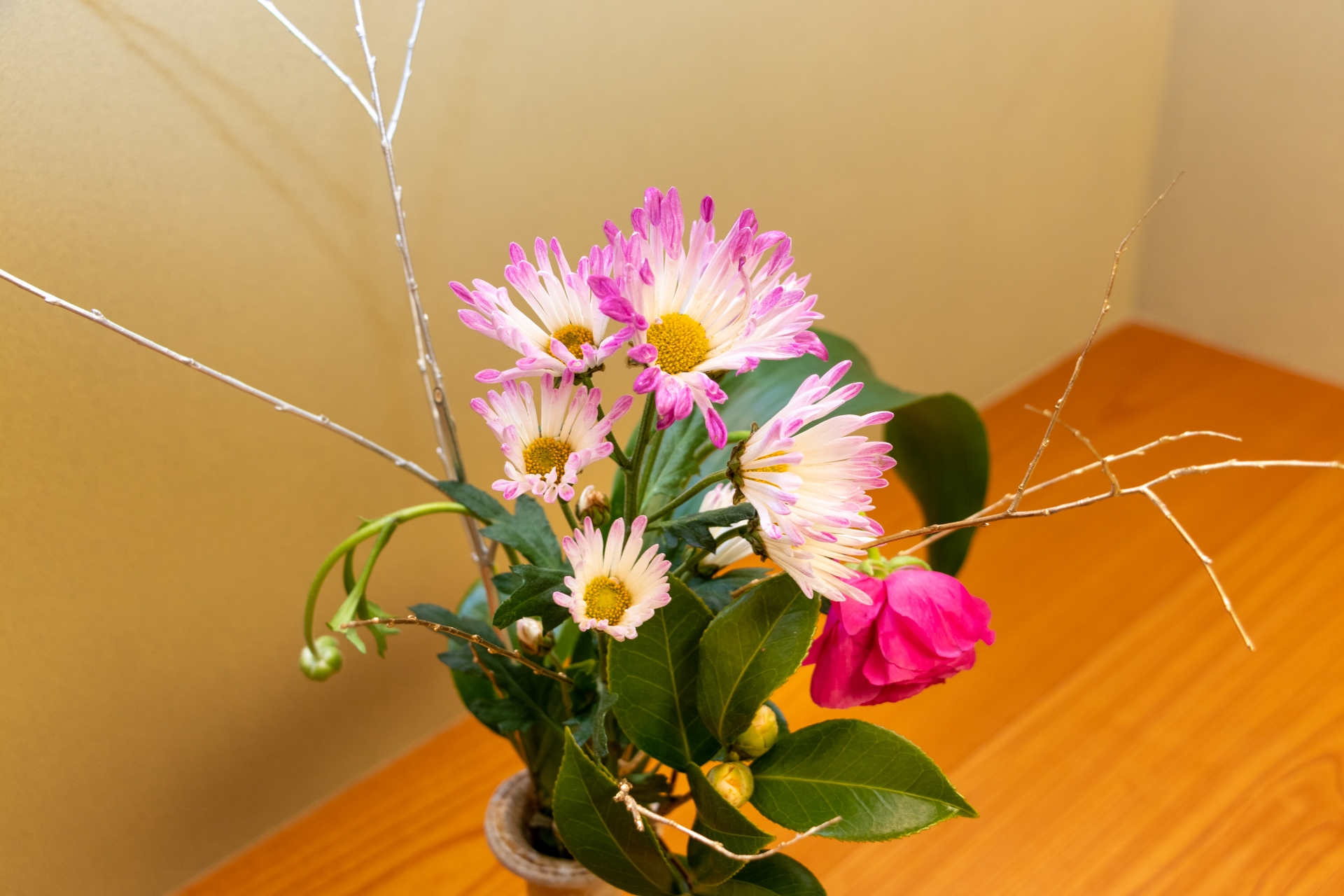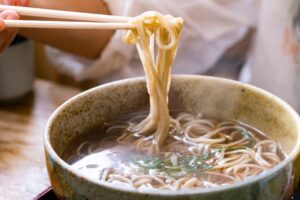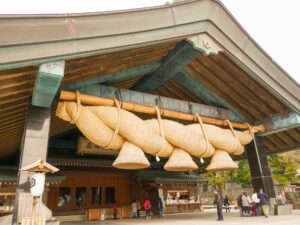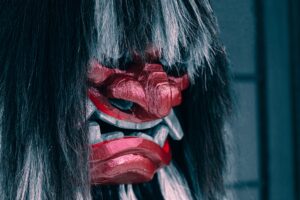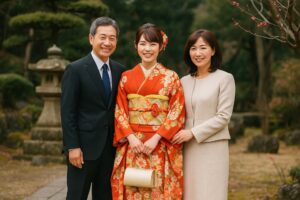Ikebana, the centuries-old Japanese art of flower arrangement, transcends mere decoration to become a profound cultural and meditative practice. Rooted in harmony, simplicity, and respect for nature, Ikebana continues to captivate people globally. Its varied styles, shaped by tradition and modern innovation, offer something for everyone—from art enthusiasts to mindfulness seekers. This guide delves into Ikebana’s styles, tools, and cultural significance, offering a roadmap for integrating this serene art into contemporary life.
What is Ikebana?
Ikebana, meaning “making flowers alive,” is the traditional Japanese art of floral arrangement. Unlike Western floral displays, Ikebana focuses on harmony, asymmetry, and the natural beauty of each stem. It originated over 600 years ago during Japan’s Muromachi period, initially as a Buddhist offering. Over time, it evolved into a sophisticated art form that reflects the philosophy of mindfulness and a deep connection to nature. Today, Ikebana is both a cultural practice and a meditative art, celebrated for its ability to bring balance and beauty into everyday life.
Understanding the Styles of Ikebana

Traditional Schools and Techniques
Ikebana boasts several schools, each with unique philosophies and styles:
- Ikenobo: The oldest school, emphasizing formal, structured arrangements that represent heaven, earth, and humanity.
- Ohara: Known for its use of naturalistic landscapes, often mimicking seasonal scenery.
- Sogetsu: A modern school that embraces freedom and creativity, allowing practitioners to incorporate unconventional materials.
These traditional techniques emphasize the balance between form, space, and material, reflecting Ikebana’s philosophical roots.
Modern and Fusion Styles
Ikebana has embraced contemporary aesthetics, blending tradition with modernity:
- Fusion styles incorporate non-traditional materials like wire, glass, and metal.
- Minimalist approaches emphasize negative space and simplicity, aligning with modern interior design trends.
- Abstract arrangements push boundaries, making Ikebana a dynamic art form in galleries and homes alike.
Such styles demonstrate Ikebana’s adaptability and its enduring relevance in today’s world.
Tools and Techniques for Practicing Ikebana
To begin your Ikebana journey, you’ll need a few essential tools:
- Kenzan: A spiked holder to anchor stems.
- Hasami: Precision scissors for cutting and shaping plant material.
- Vases: Simple yet elegant containers that complement the arrangement.
Beginner techniques focus on mastering balance and proportions, such as:
- Creating a triangular structure with three main elements: shin (heaven), soe (man), and tai (earth).
- Incorporating space to highlight individual elements and emphasize natural beauty.
These tools and techniques ensure your arrangements reflect the harmony central to Ikebana.
The Cultural and Spiritual Aspects of Ikebana
Ikebana is deeply intertwined with Zen principles, emphasizing mindfulness, simplicity, and the impermanence of life. Its practice fosters a meditative state, allowing individuals to connect with nature and find inner peace. Traditionally, Ikebana has been used in rituals and tea ceremonies, symbolizing harmony and respect. Today, it serves as a form of art therapy, helping individuals manage stress and cultivate mindfulness through creative expression.
Bringing Ikebana into Modern Life
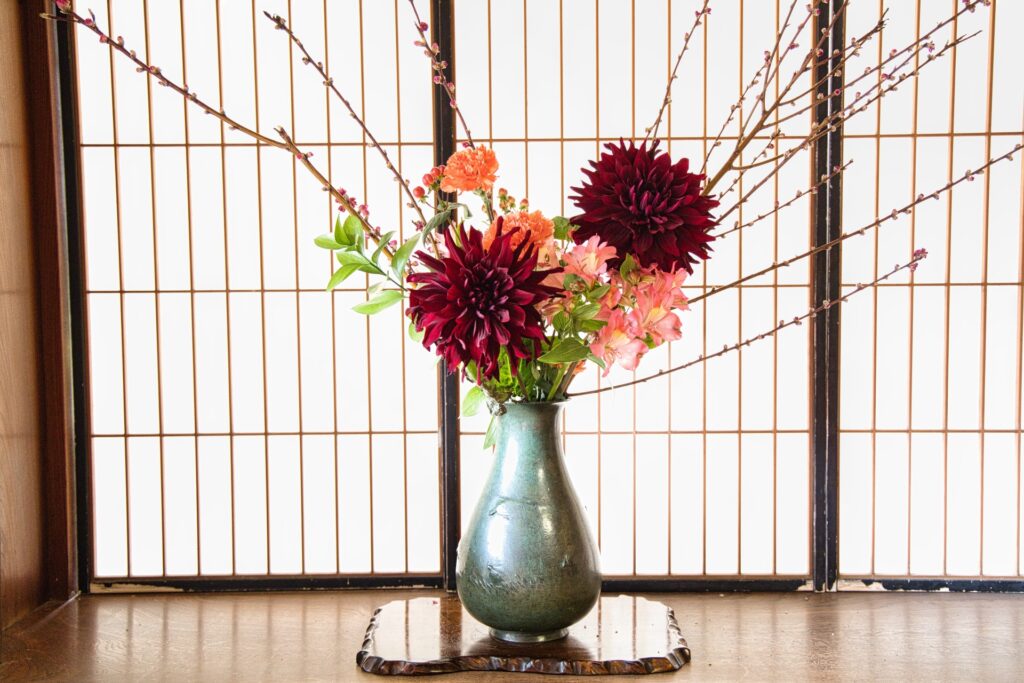
Incorporating Ikebana into contemporary settings is easier than ever:
- Interior Design: Use seasonal flowers to create arrangements that harmonize with modern minimalist spaces.
- Sustainable Practices: Opt for locally sourced or seasonal plants to honor Ikebana’s respect for nature.
- Personal Wellness: Treat Ikebana as a mindfulness practice, dedicating time to craft arrangements that reflect your mood and environment.
Virtual workshops and online communities have made learning Ikebana accessible worldwide, ensuring its timeless techniques are shared with new generations.
Conclusion:
Ikebana is more than an art; it is a journey into mindfulness, creativity, and the beauty of nature. Whether you are exploring traditional schools or experimenting with modern styles, this Japanese floral art offers endless opportunities for personal expression and connection to the natural world.

